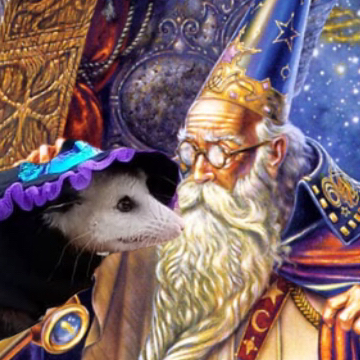A few years ago I shot just the core of NGC7822, and I’ve decided to reshoot it as a 2 panel mosaic to get some of the outer structures. The whole nebula is actually pretty big in the sky (over 3 degrees!), but I did not want to deal with processing another 8+ panel mosaic to fit the whole thing.
Captured over 23 nights from September through November, 2023 from a Bortle 9 zone.
Places where I host my other images:
-
TPO 6" F/4 Imaging Newtonian
-
Orion Sirius EQ-G
-
ZWO ASI1600MM-Pro
-
Skywatcher Quattro Coma Corrector
-
ZWO EFW 8x1.25"/31mm
-
Astronomik LRGB+CLS Filters- 31mm
-
Astrodon 31mm Ha 5nm, Oiii 3nm, Sii 5nm
-
Agena 50mm Deluxe Straight-Through Guide Scope
-
ZWO ASI-120mc for guiding
-
Moonlite Autofocuser
Acquisition: 51 hours 30 minutes (Camera at -15°C)
-
Left panel:
-
Ha - 54x360"
-
Oiii - 130x360"
-
Sii - 101x360"
-
Right Panel:
-
Ha - 46x360"
-
Oiii - 94x360"
-
Sii - 90x360"
-
Darks- 30
-
Flats- 30 per filter
Capture Software:
- Captured using N.I.N.A. and PHD2 for guiding and dithering.
PixInsight processing:
Preprocessing
-
BatchPreProcessing
-
StarAlignment
-
ImageIntegration per channel per panel
-
DrizzleIntegration (2x, Var β=1.5) per panel per channel
-
StarAlignment in mosaic mode to align the two panels, then GradientMergeMosaic to combine them
Linear:
- DynamicBackground Extraction
duplicated each image and removed stars via StarXterminator. Ran DBE with a shitload of points to generate background model. model subtracted from original pic using the following PixelMath (math courtesy of /u/jimmythechicken1)
$T * med(model) / model
-
BlurXTerminator
-
NoiseXterminator
-
STF applied via HistogramTransformation to bring nonlinear
Nonlinear:
- PixelMath to combine stretched narrowband masters into color image
SHO --> RGB (classic Hubble Palette)
-
removed stars and processed stars-only image separately with invert>SCNR and curve adjustments, to be added to starless image later.
-
HistogramTransformations to adjust channel intensities
-
Invert > SCNR > Invert to remove magentas
-
CurveTransformations for slight hue adjustments
-
LRGBCombination using stretched Ha as luminance
-
shitloads of CurveTransformations to adjust hue, lightness, saturation, etc. (some with lum masks)
-
MLT chrominance noise reduction
-
NoiseXTerminator
-
LocalHistogramEqualization
Two round of this: one at kernel radius 16 for the finer ‘feathery’ details and one at 512+ for larger structures
-
More curves
-
Relinearized narrowband and stars images to add in the stars only image
“unstretched” both images with histogramtransformation midtones set to 0.9999
pixelmath to just add those two images together
histogramtransformation to un-relinearize them by setting midtones to 0.0001
-
ColorSaturation
-
Even more curves
-
Extract L > LRGBCombination for some chrominance noise reduction
-
Slight SCNR to remove some greens from the bright parts of the nebula
-
DynamicCrop to remove a few artifacts around the edge where the panels overlap
-
Resample to 60%
-
annotation
-

